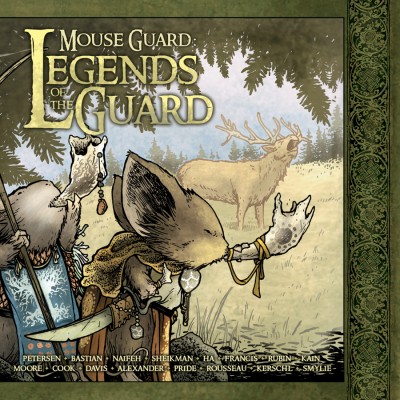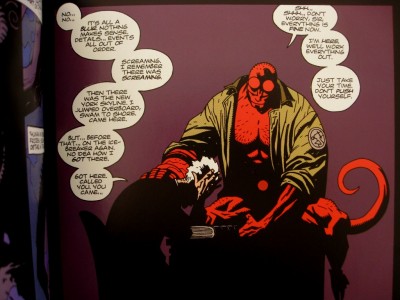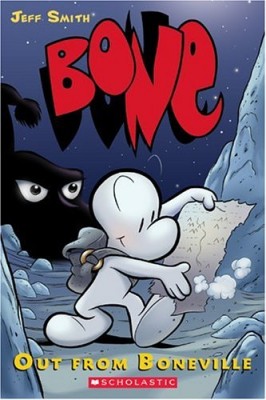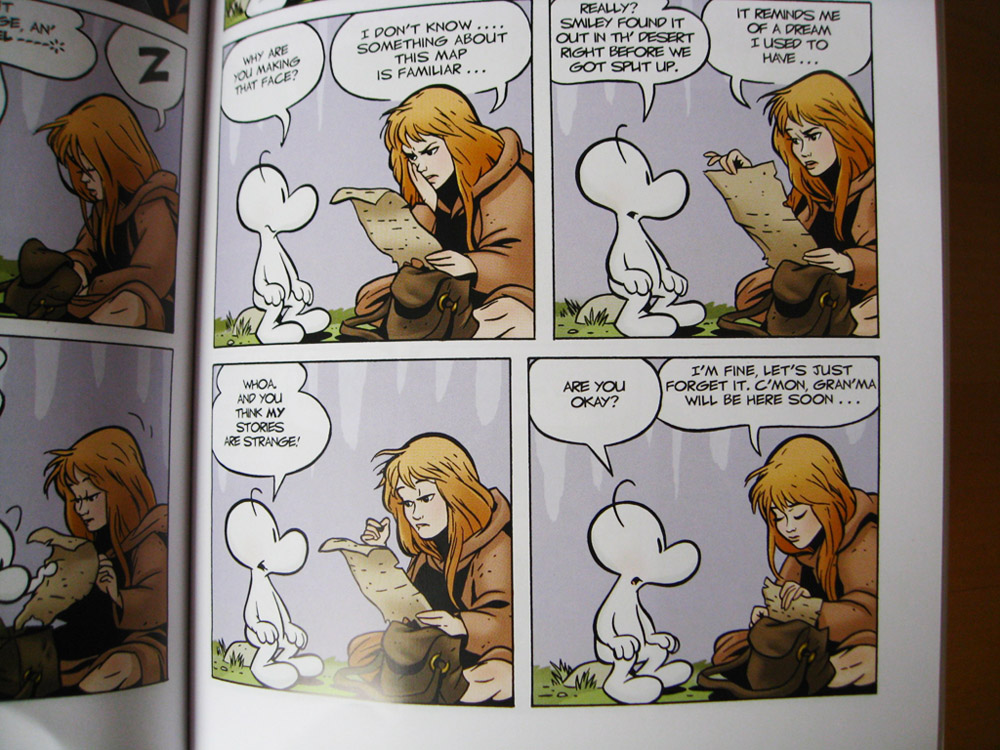Reviewer: Emera
Date read: 10.17.11
Book from: Borrowed from Kakaner
Legends of the Mouse Guard features thirteen Mouse Guard tales by a broad spectrum of guest artists and authors. Cute, fun, mostly not really worth reading except for a few outstanding cases of either extremely beautiful art, great visual storytelling, or occasionally both. Highlights for me:
- Jeremy Bastian’s “The Battle of the Hawk’s Mouse and the Fox’s Mouse:” Mindblowingly detailed faux-etchings in colors of faded heraldry.
- Ted Naifeh’s “A Bargain in the Dark:” The storytelling could have been sharper, but Naifeh’s ink-heavy, swoopingly angular style (which I’d seen before via his collaborations with Caitlín Kiernan and Holly Black) stands out here from the more traditional illustrations in most of the rest of the collection. And they couldn’t be more perfectly suited to Darkheather’s subterranean vaults, where his story of a wary alliance between a mouse and a bat takes place .
- Gene Ha & Lowell Francis’ “Worley and the Mink:” Possibly my all-around favorite, for the combination of good humor, rich art and excellent action sequences. A tubby, bespectacled banker-mouse outwits both a tribe of hostile mice and a voracious mink.
- Guy Davis’ wry & wordless “The Critic,” in which a warrior takes too much inspiration from an artist’s rendering of derring-do.
- The sweeping tundra scenes of Karl Kerschl’s “Bowen’s Tale” (also wordless), which wonderfully convey the immensity and severe beauty of the arctic from a mouse-sized perspective.
Petersen provides the framing story, of customers at an inn competing in a tale-telling contest to cancel their bar tabs, the totally epic cover of horn-blowing mice (my favorite Mouse Guard cover so far), and some equally epic spreads of other legendary mouse exploits, which appear in-universe as paintings on the inn’s walls.
Go to:
David Petersen: bio and works reviewed
Mouse Guard: Fall 1152, by David Petersen, review by Emera
Mouse Guard: Winter 1152, by David Petersen, review by Emera




 Bone, Volume 1: Out From Boneville
Bone, Volume 1: Out From Boneville